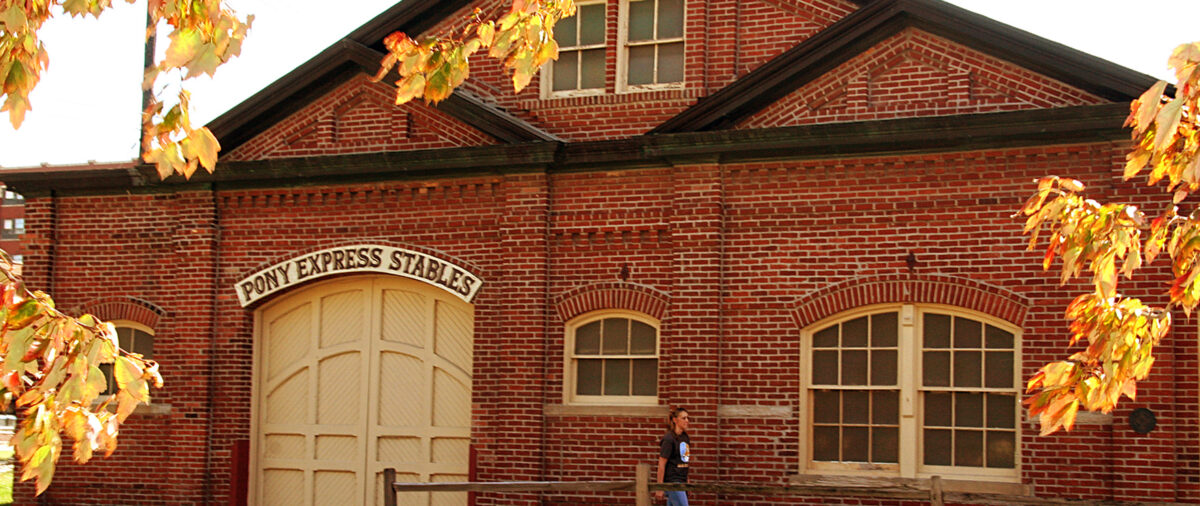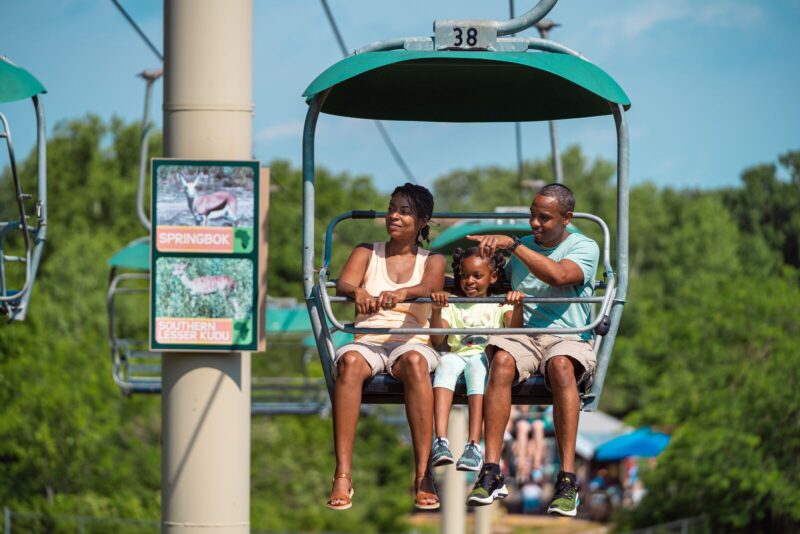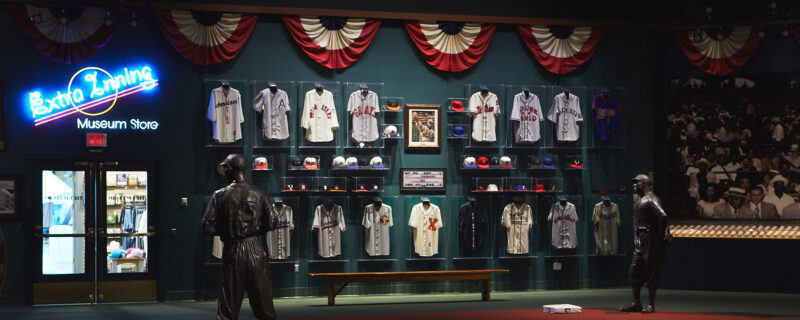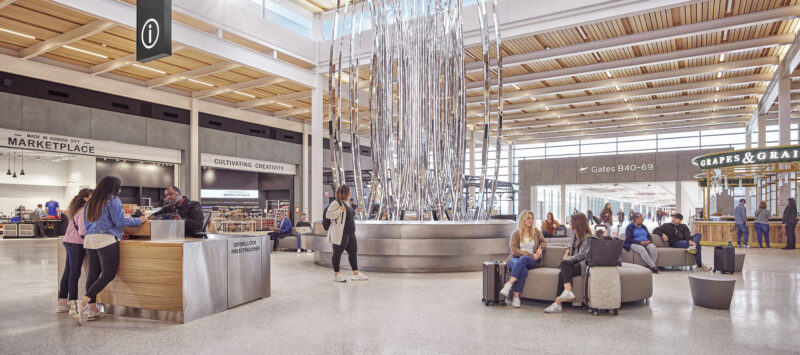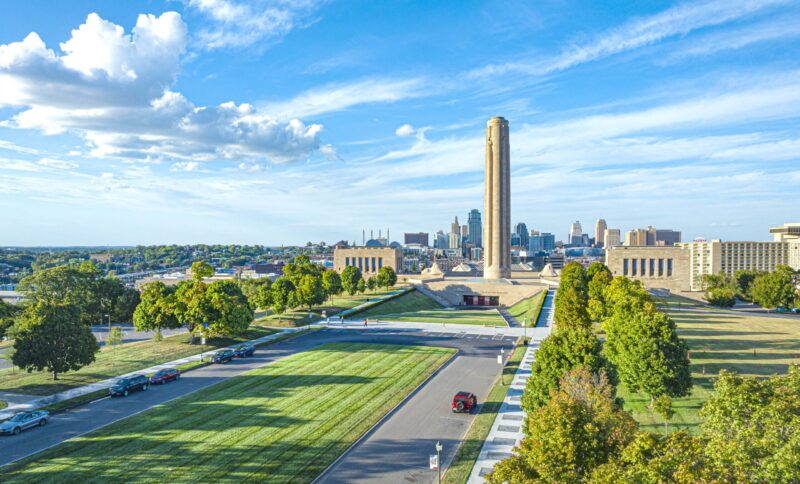Kansas City’s location on the Missouri River naturally positioned it as a strategic starting point for those heading to the Wild West. The city became an outpost for the mass migration of Americans in search of land, riches and new beginnings.
Explore the heritage the region celebrates today, from Lewis and Clark’s famed expedition and four westbound trails to living history museums and a national museum dedicated to the frontier.
Independence
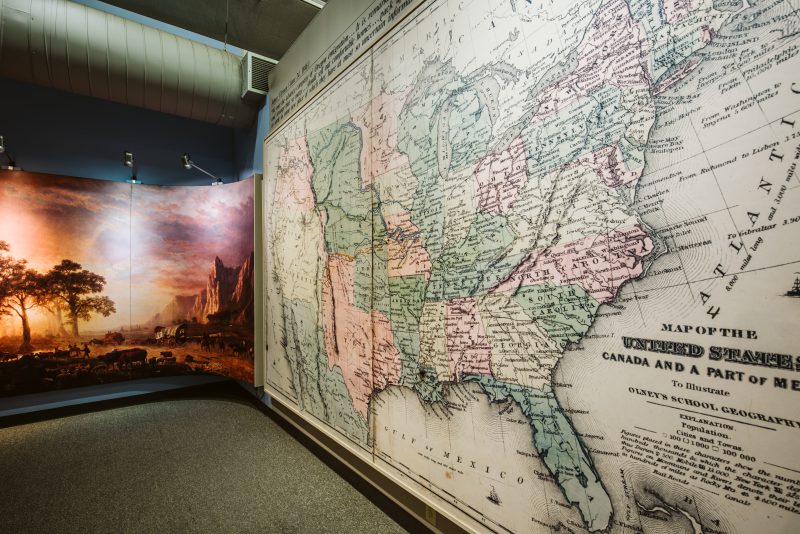
Just 20 minutes from Downtown Kansas City,Independence, Missouri, was once considered the “jumping off” point for three great Western routes — the Santa Fe, Oregon and California trails.
With a nickname like “Queen City of the Trails,” it’s no surprise the city hosts an annual SantaCaliGon Days festival each summer to celebrate its unique heritage. Throughout Independence, you can also find this history recorded in detailed museums and century-old buildings still standing from the mid- to late-1800s.
LEARN:
Located in Downtown Independence, the National Frontier Trails Museum is the only museum in the country devoted to the Santa Fe, Oregon and California trails, highlighting unique features of each route and their impact on American history. Exhibits also focus on the explorations of Lewis and Clark, early fur trappers and traders and why people heeded the call to “go west!” Visitors will find authentic covered wagons, trail artifacts and original diaries, an educational film and more.
DINE:
Just steps from the historic Truman Courthouse, hungry travelers will find The Courthouse Exchange, which has been serving up burgers and comfort food favorites since 1899. Sink your teeth into a California, Santa Fe or Oregon Trail burger in this below-street-level eatery in the heart of Independence.
Looking for a local brew to wash down lunch? Head just around the corner and slide up to the bar at 3 Trails Brewing Co., another reference to the city’s pioneering history.
EXPERIENCE:
Built over 150 years ago, the 1859 Jail Museum was the location of the third Jackson County jail. It’s one of the oldest surviving structures in the county. Massive walls and barred windows that once housed outlaw Frank James, brother to Jesse James, give a chilling look at frontier justice.
TOUR:
Independence is home to even more 19th Century buildings and historic homes. The Bingham-Waggoner Estate has been a mainstay in the city since 1827. The property once housed Civil War artist and local politician George Caleb Bingham. Then in 1879, the Waggoner family moved into the home and lived there for nearly a century. A year later, passionate locals helped the city to preserve the 19.5-acre estate and reimagine it into a museum and park.
On a tour of the restored property, visitors can peruse original furnishings and reproductions of Bingham’s artwork. On the grounds, look for the deep swales left by the countless wagons that rolled by when it served as the starting point for trails that led west.
North of Downtown Independence, visitors are also able to tour the Vaile Mansion, built in 1881. It was once considered “the most princely house and the most comfortable home in the entire west,” the Kansas City Times reported in 1882. This Gothic-inspired Victorian home boasts 31 rooms, nine marble fireplaces, intricately painted ceilings and more ornate period decor.
Lee’s Summit
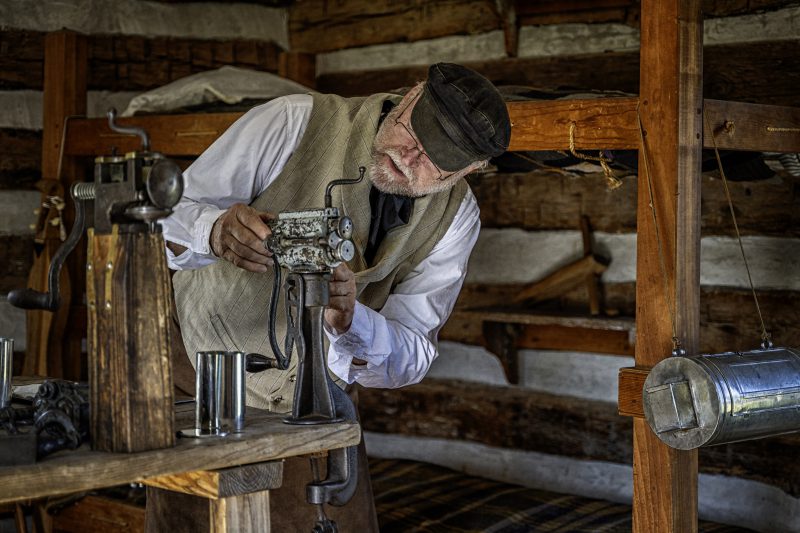
To the south of Independence, the city of Lee’s Summit, Missouri, has its own piece of Wild West history.
Cole Younger was a lifelong resident of the town in the 19th Century and eventually became Jesse James’s right hand as a leader of the James-Younger Gang. The outlaws were known for robbing banks, stagecoaches and trains in the years after the Civil War until Younger and his brothers were captured and imprisoned in 1876. He later died in Lee’s Summit and was buried in his hometown.
EXPERIENCE:
The area’s history comes to life at Missouri Town Living History Museum. This immersive experience features more than 25 buildings, dating from 1822-1860, across nearly 30 acres. The structures come from seven western Missouri counties and were moved piece by piece before being accurately reassembled on site.
Guests can take a self-guided tour while exploring the buildings filled with historic tools and furnishings. Living history interpreters dressed in period attire share the story of daily life in the mid-1800s — everything from clothing to cooking methods, blacksmithing to farming.
Kansas City, Missouri
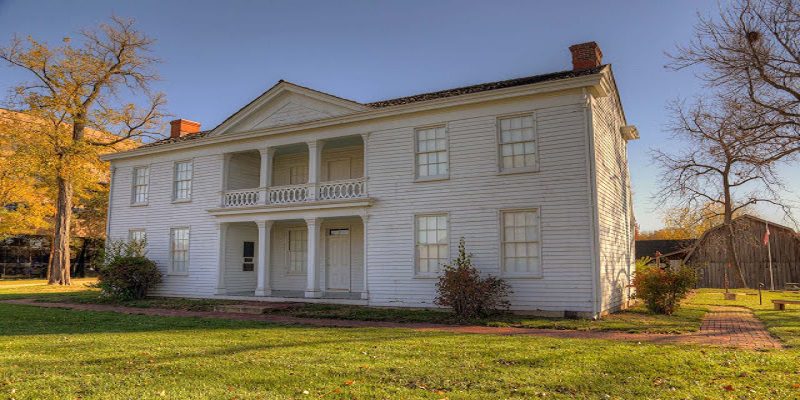
After the Louisiana Purchase, explorers Lewis and Clark visited the confluence of the Missouri and Kansas rivers, noting that it would be a good place to build a fort.
Their prediction would prove accurate. About 30 years later, John McCoy, considered the father of Kansas City, established “West Port” along the Santa Fe Trail, just a few miles south of the river, and then Westport Landing at the river to serve as the landing point for West Port.
By 1850, the landing area was incorporated as the town of Kansas, Missouri, and became a critical point for those heading West. The city grew rapidly after the Civil War as the railroad expanded and the population boomed. That prompted a name change in 1889 to what we know the area as today: Kansas City.
Today, you can find 19th Century history all across the city.
EXPERIENCE:
In 1856, the steamboat Arabia was traveling upriver to Montana with supplies needed for a small town on the Western frontier. The boat hit a snag in the Missouri River and sank near modern day Parkville, Missouri.
The Arabia was recovered more than a century later beneath a Kansas farm field with all of its cargo intact and in pristine condition. These artifacts are now on display at the Arabia Steamboat Museum, a one-of-a-kind establishment offering a fascinating glimpse into early Western life.
DINE:
Craft and cool are king in Westport, now known as a popular nightlife and dining destination. However, in the mid-1800s, the area stood as a bustling stopping point that offered the last taste of civilization at the doorstep of the Wild West.
That history is on display at Kelly’s Westport Inn, housed in the oldest building in Kansas City. It was built in 1851 and was first a grocery store catering to wagon trains as they headed west on the Santa Fe Trail, which passed right by the front door. The property was designated as a National Historic Landmark in 1959, over 100 years after it was first built.
Today, Kelly’s Westport Inn is a popular watering hole in a busy entertainment district, regularly featuring live music, weekday specials and the Guy’s Deli menu of pizza, deli sandwiches and more bar favorites.
LEARN:
Businessman Alexander Majors and his freighting firms helped build many of the small towns that popped up along the Santa Fe Trail. His enterprise, however, was based in Kansas City.
Today, you can tour his home and barn, located in the current-day Waldo neighborhood, which for a short time served as the headquarters of Majors’ best-known venture: the Pony Express.
St. Joseph
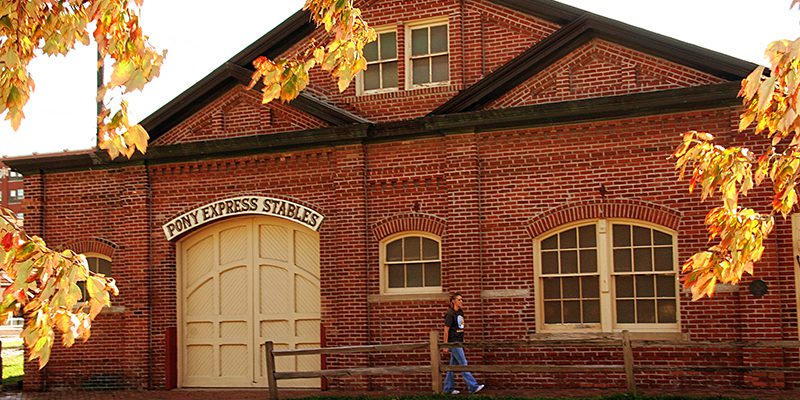
It’s where the Pony Express started and Jesse James ended. St. Joseph, Missouri, is a premier destination for history buffs.
About one hour north of Kansas City, the city was once a final supply point and jumping off point for travelers on the Missouri River headed west. St. Joseph was also the country’s westernmost point accessible by rail until after the Civil War. That’s led to a pioneering past in more ways than one for this Missouri town.
EXPERIENCE:
With a $10,000 reward out for his head, legendary outlaw Jesse James moved to St. Joseph to hide out. It’s where he would ultimately meet his match.
Fellow gang member Robert Ford shot James in his home in 1882 to collect that reward, creating a legendary bullet hole. Now behind a protective frame, the bullet hole is nearly a foot wide after years of being picked at by tourists.
Moved from its original location, the Jesse James Home and Museum now sits on the grounds of the Patee House Museum.
Want to see where it all began for James? Make a detour to Kearney, Missouri, where it all began for the James brothers. There you’ll find the Jesse James Birthplace Museum, which contains the largest collection of James family artifacts in the world. Jesse’s gravesite at Kearney’s Mount Olivet Cemetery also draws thousands of visitors each year.
LEARN:
On the same property as St. Joseph’s Jesse James Home and Museum, you’ll find the Patee House Museum. The Patee House, completed in 1858, was once one of the best-known hotels west of the Mississippi River.
The 140-room luxury hotel also had office space, including the headquarters for the Pony Express. After Jesse James was killed, his family stayed at the hotel during the investigation. The building has since been designated as a National Historic Landmark and operates as a museum of American history.
A short walk down the street is the Pony Express National Museum, documenting the history of the first fast mail service to the West. In 1860, a lone rider left St. Joseph on horseback carrying saddlebags filled with mail for California. That first westbound trip across 2,000 miles took about 10 days.
Eventually, the Pony Express had over 180 stations, 80 riders and hundreds of horses running mail back and forth between California and Missouri. The service lasted only 19 months, delivering about 35,000 letters, until the transcontinental telegraph connected both coasts.
But the Pony Express stables still stand today, now operating as a national museum for all ages.
DINE:
Hoof and Horn Steakhouse was built in 1898 and first opened as a saloon, but just after the turn of the century it began operating as a restaurant, now the oldest in St Joseph.
In the decades since, a lot has changed in St. Joseph, but one thing hasn’t: This steakhouse still serves up hand-cut steaks, grilled to perfection.
STAY:
After all those museum adventures, you might be looking for somewhere to rest for the night. St. Joseph is home to several historic bed and breakfasts, built in the late 19th Century.
Whiskey Mansion Inn, in particular, has a unique western history. The home was built in 1885 by German immigrants who came to St. Joseph and eventually began distributing whiskey to mining towns out West. The business grew fast as the population in the West boomed, and the husband-and-wife duo became wealthy members of St. Joseph society.
Despite a fire in 1995, the mansion has since been restored and filled with period furniture, plus modern touches like air conditioning, for a relaxing stay.
Olathe
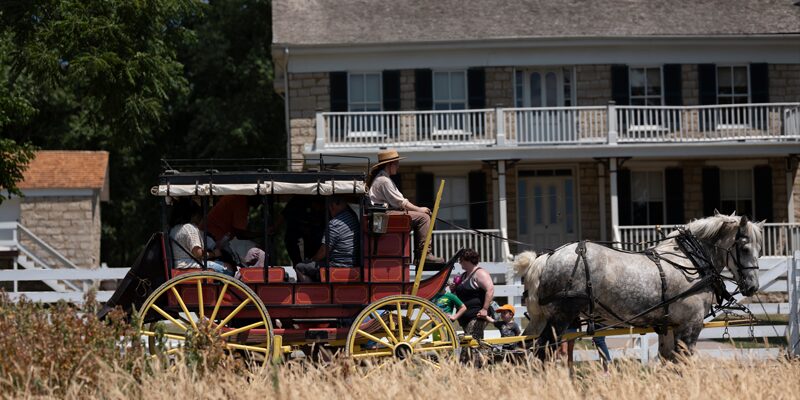
Olathe, Kansas, served as as stop on the Oregon, California and Santa Fe trails, and the main source of income for local stores and businesses came from taking care of travelers.
EXPERIENCE:
That pioneering history is captured at Mahaffie Stagecoach Stop & Farm, which was once a popular resupply point for wagons headed westward. It is now the only working stagecoach stop left on the Santa Fe Trail and is listed on the National Register of Historic Places.
Located on almost 40 acres, the house has been converted into a living history museum with hands-on experiences of farming, frontier life and stagecoach travel. Visitors can immerse themselves in 1860s activities like watching live blacksmith demonstrations and taking stagecoach rides around the property.
Your 3-Day Guide
Here’s how to spend three days exploring Wild West history throughout the Kansas City area.
This itinerary allows you to depart from and return to Kansas City each day if desired. Some destinations on this route are not easily accessible via public transportation. If you plan to follow this itinerary, a rental car/private vehicle is strongly recommended.
Day 1: Independence and Lee’s Summit
- Travel to Independence (via car, RideKC bus or Amtrak train) and visit the National Frontier Trails Museum and the 1859 Jail Museum.
- Dine at the Courthouse Exchange, open since 1899, or 3 Trails Brewing in Downtown Independence.
- Tour the Bingham-Waggoner Estate or Vaile Mansion.
- Travel to Lee’s Summit (via car) and visit the Missouri Town Living History Musuem.
Day 2: St. Joseph
- Travel to St. Joseph (via car) and visit the Pony Express National Museum, the Patee House Museum and the Jesse James Home.
- Dine at Hoof and Horn Steakhouse, built in 1898.
- Optional: Stay the night at Whiskey Mansion Inn.
Day 3: Kansas City and Olathe
- Optional: Return to Kansas City if staying in St. Joseph overnight.
- Visit the Arabia Steamboat Museum in the River Market neighborhood.
- Enjoy lunch and drinks at Kelly’s Westport Inn & Guy’s Deli.
- Visit the Alexander Majors Home & Museum.
- Travel to Olathe (via car) and visit the Mahaffie Stagecoach Farm.
